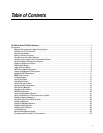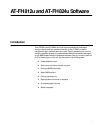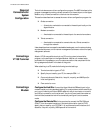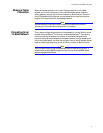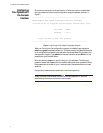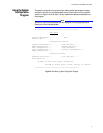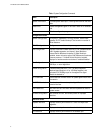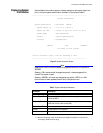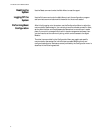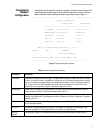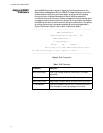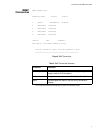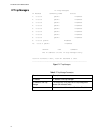AT-FH812u and AT-FH824u Software
2
Required
Connections for
System
Configuration
The hub includes a menu-driven configuration program. The ASCII interface to this
program is accessed by making a direct connection to the serial port on the Agent
Module, or by a Telnet connection to the hub over the network.
This section describes how to access the menu-driven configuration program via:
❑ Onsite connection
— A terminal or workstation connected to the serial port locally on the
Agent Module.
❑ Modem connection
— A workstation connected to the serial port of a remote via modems.
❑ Telnet connection
— A workstation connected to a remote hub via a Telnet connection
through the network.
It also describes how to access the embedded web agent over the network using
any standard browser, or with network management software or other third-party
mangement software.
Connecting a
VT100 Terminal
Attach a VT100-compatible terminal, or a PC running a terminal emulation
program, to the serial port on the Agent Module. Use the null-modem cable
provided with this package, or a null modem connection that complies with the
wiring assignments shown in the back of this guide.
When attaching to a PC, make the following terminal settings:
❑ Terminal emulation type to VT100
❑ Specify the port used by your PC, for example COM 1~4
❑ Communications to 8 data bits, 1 stop bit, no parity, and 9600 bps (for
initial configuration)
❑ Flow control to none
Connecting a
Modem
Configure the Hub Site.
Connect the Agent Module's DB9 serial port to the
modem's serial port using standard cabling. For most modems, which use a 25-pin
port, you will need to provide an RS232 cable with a 9-pin connector on one end
and a 25-pin connection on the other end. You do not have to set the modem at
the hub's site, because the hub will automatically configure it to auto-answer
mode.
Configure the Remote Site.
At the remote site, connect the PC's COM port
(COM 1~4) to the modem's serial port. Set terminal emulation type to VT100,
specify the port used by your PC (COM 1~4), and then set communications to 8
data bits, 1 stop bit, no parity, 9600 bps and no flow control.





